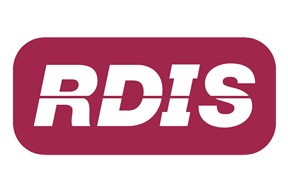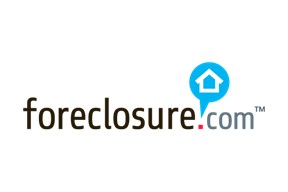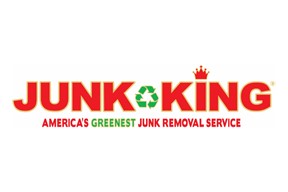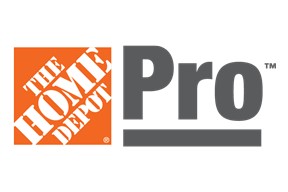RealtyTrac’s Year-End 2015 U.S. Home Sales Report shows that U.S. home sellers in 2015 realized an average price gain since purchase of 11 percent ($20,378), the biggest average price gain for U.S. home sellers since 2007 — an eight-year high.
The 11 percent average price gain in 2015 marked the second consecutive year where U.S. home sellers realized an average price gain following six consecutive years where U.S. home sellers realized average price losses.
“With some local market exceptions, the 2015 home sales data paints the picture of a properly functioning U.S. housing market where homeowners can once again count on real estate as an appreciating asset — a long-touted axiom soundly debunked as ironclad truth between 2008 and 2013,” said Daren Blomquist, vice president at RealtyTrac. “This return to consistent home price gains for sellers should reinforce confidence in real estate in 2016 and produce another year of solid sales volume as homeowners cash out their equity gains.”
Of 155 U.S. counties analyzed in the report, released Feb. 4, 2016, those where 2015 home sellers realized the highest average price gains were San Mateo County, California, in the San Francisco metro area (65 percent average home price gains for 2015 home sellers); Alameda County, California, also in the San Francisco metro area (64 percent average gain); Santa Clara County, California, in the San Jose metro area (63 percent average gain); Middlesex County, New Jersey, in the New York-Newark-Jersey City metro area (52 percent average gain); and Multnomah County, Oregon, in the Portland metro area (49 percent average gain).
Home sellers in 2015 realized average home price losses since purchase in 19 of the 155 counties analyzed (12 percent), led by Mobile County, Alabama, in the Mobile metro area (16 percent average home price loss for 2015 home sellers); Cuyahoga County, Ohio, in the Cleveland metro area (13 percent average loss); Baltimore City County, Maryland, in the Baltimore metro area (13 percent average loss); Burlington County, New Jersey, in the Philadelphia metro area (12 percent average loss); and Montgomery County, Ohio, in the Dayton metro area (9 percent average loss).
Areas with Increase in Median Home Price
The U.S. median home price at the end of 2015 was $206,500, up 10 percent from a year ago. December was the 46th consecutive month with a year-over-year increase in the U.S. median home price.
Among 87 major metropolitan statistical areas analyzed for the report, 79 (91 percent) posted a year-over-year increase in median home price at the end of 2015.
Among the nation’s 46 markets with a population of at least 1 million, those with the biggest year-over-year increase in home prices were St. Louis (19 percent increase), Raleigh, N.C. (17 percent increase), Detroit (17 percent increase) and Tampa (15 percent increase), with Denver, Seattle, San Jose and Providence, R.I., all posting increases of 13 percent.
“The drop in short sales, REOs foreclosures, and institutional investors can all be attributed to the rapid price growth we continue to see in the greater Seattle area,” said Matthew Gardner, chief economist at Windermere Real Estate, covering the Seattle market. “Market values have simply increased to a point whereby it’s unlikely that we’ll have much distressed supply growth other than as a function of banks working through old inventory. This has also had an impact on distressed home prices, which are unsurprisingly on the rise due to woefully low inventory levels and buyer competition.“
“Residential housing across most of the metros in Ohio experienced double-digit increases in median prices for 2015, proof positive of an Ohio housing market that is in a stable growth trajectory for the future,” said Michael Mahon, president at HER Realtors, covering the housing markets of Dayton, Columbus and Cincinnati, where median home prices increased 12 percent year-over-year, the ninth-biggest increase among markets with a population of at least 1 million. “Higher median prices mean increased equity for many homeowners, which will likely lead to an increase in eligible move-up buyers for 2016. While the luxury market over $500,000 was fairly flat in 2015, we are forecasting a stronger demand in this price range for 2016 that will further drive sales prices upward across many of these same metros for the coming year.”
Eight Markets Post Annual Decrease in Median Home Price
Eight markets among the 87 analyzed for the report (9 percent) posted a year-over-year decrease in median home sales price at the end of 2015, and Houston was the only market among the 46 with a population of at least 1 million to post a decrease (down 2 percent in December from a year ago).
The other seven markets posting a year-over-year decrease in median home price were Bridgeport, Conn. (down 8 percent), Winston-Salem, N.C. (down 6 percent), Dayton, Ohio (down 5 percent), Augusta, Ga. (down 4 percent), Little Rock, Ark. (down 1 percent), Harrisburg, Pa. (down 1 percent) and York, Pa. (down 1 percent).
Markets with the biggest month-over-month decrease in median home price in December were Flint, Mich. (down 8 percent), Augusta, Ga. (down 8 percent), Tulsa, Okla. (down 6 percent), Provo, Utah (down 5 percent) and Nashville (down 5 percent).
38 Percent of Markets Hit New All-Time Home Price Peaks
Among the 87 metropolitan statistical areas analyzed for the report, 33 (38 percent) posted new all-time highs for median home prices in 2015, and 20 of the 46 metro areas with a population of at least 1 million (43 percent) posted new all-time highs for home prices in 2015.
Among the 46 markets with a population of at least 1 million, those with home prices still furthest below previous peaks were Las Vegas (34 percent below previous peak in June 2006), Birmingham (31 percent below previous peak in July 2007), Orlando (31 percent below previous peak in June 2006), Miami (28 percent below previous peak in June 2007) and Chicago (27 percent below previous peak in July 2007).
Home Sales Volume Reaches Nine-Year High
A total of 3.1 million U.S. existing single-family homes and condos sold in 2015, up 7.5 percent from 2014 to the highest level since 2006, when there were 3.4 million single-family and condo sales (nine-year high), according to the public record real estate deed data collected by RealtyTrac in nearly 1,000 counties nationwide.
Among 207 metropolitan statistical areas with at least 100 single-family home and condo sales, 74 (36 percent) reached a nine-year high in sales volume in 2015 while 39 metros (19 percent) reached 10-year high, including Miami, Minneapolis-St. Paul, Tampa, Denver and Columbus, Ohio.
“South Florida real estate recorded one of the beat years since the Great Recession with a strong double-digit year-over-year price gain,” said Mike Pappas, CEO and president of Keyes Company, covering the South Florida market. “We are seeing a pickup in Millennial buyers, who are taking advantage of the FHA low down payment options. We are continuing to see dramatic decline in the hangover distressed market. This all adds up to a healthy 2016.”
Distressed Sales and Short Sales Combined Drop to Eight-Year Low
Distressed sales (in-foreclosure and bank owned) and short sales combined accounted for 17.3 percent of all sales in 2015, an eight-year low.
States with the highest share of distressed and short sales combined in 2015 were Illinois (28.1 percent), Florida (26.4 percent), Maryland (24.7 percent), Nevada (21.7 percent) and Connecticut (20.7 percent).
Among metropolitan statistical areas with a population of at least 200,000 those with the highest share of distressed and short sales combined were Atlantic City, N.J. (34.2 percent), Orlando (31.1 percent), Tallahassee, Fla. (31.1 percent), Rockford, Ill. (31.1 percent) and Gainesville, Fla. (30.8 percent).
Bank-owned (REO) sales accounted for 8.7 percent of all U.S. single-family and condo sales in 2015, down from 11.1 percent in 2014 and down from 12.2 percent in 2013 to the lowest level since 2007, when bank-owned sales accounted for 8.1 percent of all sales. The peak in share of bank-owned sales was 2009 at 25.2 percent.
Sales of homes in the foreclosure process but not yet bank-owned accounted for 3.5 percent of all U.S. single-family and condo sales in 2015, down from 4.6 percent in 2014 and down from 5.4 percent in 2013 to the lowest level since 2007, when 2.8 percent of all home sales were properties in the foreclosure process. The peak in the share of U.S. in-foreclosure sales was 2010 at 8.7 percent.
Short sales of homes not in foreclosure or bank-owned accounted for 5.1 percent of all U.S. single-family and condo sales in 2015, down from 5.4 percent in 2014 and down from 6.4 percent in 2013 to the lowest level since 2008, when 3.3 percent of all home sales were short sales. The peak in short sales was 2012 at 8.1 percent. A short sale is when the sales price of the home is less than the combined amount of loans secured by the home.
Cash Sale Share Drops to Seven-Year Low
All-cash buyers accounted for 30.1 percent of all U.S. single-family home and condo sales in 2015, down from 31.6 percent in 2014 and down from 35.6 percent in 2013 to the lowest level since 2008. The peak in share of cash sales was in 2012 at 36.3 percent.
States with the highest share of all-cash buyers in 2015 were Florida (50.4 percent), Hawaii (42.5 percent), Michigan (39.4 percent), Alabama (39.2 percent) and Georgia (38.9 percent).
Among markets with a population of at least 1 million, those with the highest share of all-cash sales in 2015 were Miami (55.2 percent), Tampa (48.5 percent), Orlando (44.5 percent), Memphis (44.2 percent), Jacksonville, Fla. (42.4 percent), Detroit (41.1 percent), Las Vegas (37.9 percent), Raleigh, N.C. (37.7 percent), Atlanta (37.6 percent) and Cleveland (36.5 percent).
FHA Buyer Share Reaches Four-Year High
FHA buyers (typically with low down payments) accounted for 15.7 percent of all U.S. single-family home and condo sales in 2015, up from 12.5 percent in 2014 and up from 12.6 percent in 2013 to the highest level since 2011. The previous peak in share of FHA buyers was 2009 at 23.9 percent.
States with the highest share of FHA buyers in 2015 were Utah (30.3 percent), Wyoming (27.3 percent), Indiana (27.2 percent), Idaho (26.4 percent) and New Mexico (24.4 percent).
Among markets with a population of at least 1 million, those with the highest share of FHA buyers in 2015 were Salt Lake City (30.8 percent), Riverside-San Bernardino (26.4 percent), Kansas City (26.2 percent), Indianapolis (25.7 percent), San Antonio (24.4 percent), Houston (23.1 percent), Sacramento (21.6 percent), Phoenix (21.2 percent), Dallas (21.2 percent) and Las Vegas (21.0 percent).
Institutional Investor Share Drops to All-Time Low
Institutional investors purchasing at least 10 properties in a calendar year accounted for 2.7 percent of all U.S. single-family home and condo sales in 2015, down from 5.8 percent in 2014 and down from 7.6 percent in 2013 to the lowest level since 2000, the earliest year RealtyTrac has data for institutional investors.
States with the highest share of institutional investor purchases in 2015 were Georgia (5.9 percent), Ohio (4.3 percent), Louisiana (4.2 percent), Alabama (4.0 percent) and Nebraska (3.9 percent).
Among markets with a population of at least 1 million, those with the highest share of institutional investors in 2015 were Memphis (7.3 percent), Jacksonville, Fla. (6.8 percent), Atlanta (5.8 percent), Tampa (5.5 percent), New Orleans (5.1 percent), Cincinnati (5.1 percent), Charlotte (4.4 percent), St. Louis (4.4 percent), Cleveland (4.3 percent) and Columbus, Ohio (4.3 percent).
33 Metros with New Peak Prices in 2015
| MSA | Peak Price | Peak Month |
| San Jose-Sunnyvale-Santa Clara, CA | $840,000 | Jun-15 |
| Urban Honolulu, HI | $505,270 | Nov-15 |
| Denver-Aurora-Lakewood, CO | $310,000 | Jun-15 |
| Portland-Vancouver-Hillsboro, OR-WA | $294,000 | Jun-15 |
| Fort Collins, CO | $286,000 | Jun-15 |
| Austin-Round Rock, TX | $278,602 | Dec-15 |
| Greeley, CO | $249,900 | Jul-15 |
| Raleigh, NC | $229,500 | Jun-15 |
| Colorado Springs, CO | $225,000 | May-15 |
| Dallas-Fort Worth-Arlington, TX | $223,133 | Jun-15 |
| Charleston-North Charleston, SC | $222,500 | May-15 |
| Houston-The Woodlands-Sugar Land, TX | $219,366 | Jun-15 |
| Nashville-Davidson–Murfreesboro–Franklin, TN | $200,000 | Jun-15 |
| San Antonio-New Braunfels, TX | $195,510 | Jun-15 |
| Charlotte-Concord-Gastonia, NC-SC | $190,000 | Jun-15 |
| Atlanta-Sandy Springs-Roswell, GA | $187,500 | Jun-15 |
| Indianapolis-Carmel-Anderson, IN | $183,208 | Jun-15 |
| Columbus, OH | $168,450 | Jun-15 |
| Des Moines-West Des Moines, IA | $165,000 | Jul-15 |
| Kansas City, MO-KS | $163,531 | May-15 |
| St. Louis, MO-IL | $160,000 | Jun-15 |
| Cincinnati, OH-KY-IN | $147,000 | Jul-15 |
| Chattanooga, TN-GA | $145,400 | Aug-15 |
| Grand Rapids-Wyoming, MI | $145,000 | Jun-15 |
| Pittsburgh, PA | $144,000 | Jul-15 |
| Tulsa, OK | $143,000 | Jul-15 |
| Oklahoma City, OK | $140,500 | Aug-15 |
| Augusta-Richmond County, GA-SC | $140,000 | Jul-15 |
| Memphis, TN-MS-AR | $140,000 | Jun-15 |
| Rochester, NY | $137,500 | Jul-15 |
| Columbia, SC | $136,000 | Jun-15 |
| Dayton, OH | $120,000 | Jun-15 |
| Flint, MI | $110,000 | Jul-15 |
About RealtyTrac
RealtyTrac is a leading provider of comprehensive U.S. housing and property data, including nationwide parcel-level records for more than 130 million U.S. properties. Detailed data attributes include property characteristics, tax assessor data, sales and mortgage deed records, distressed data, including default, foreclosure and auctions status, and Automated Valuation Models (AVMs). Sourced from RealtyTrac subsidiary Homefacts.com, the company’s proprietary national neighborhood-level database includes more than 50 key local and neighborhood level dynamics for residential properties, providing unrivaled pre-diligence capabilities and a parcel risk database for portfolio analysis. RealtyTrac’s data is widely viewed as the industry standard and, as such, is relied upon by real estate professionals and service providers, marketers and financial institutions, as well as the Federal Reserve, U.S. Treasury Department, HUD, state housing and banking departments, investment funds and tens of millions of consumers.
























0 Comments